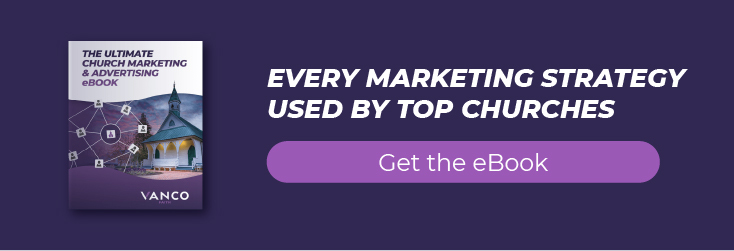 Giving statistics vary from church to church. But one thing remains true: The amount of giving in the church has a huge impact on the longevity of any congregation, especially during recessions. In 2008, “One out of every five households began giving less money to faith institutions. Another 22% stopped giving to church altogether.” (Dave Ramsey) When there’s a sudden drop in giving, financial stewardship suffers. To compound matters even further, our research had found the average amount of church giving is down.
Giving statistics vary from church to church. But one thing remains true: The amount of giving in the church has a huge impact on the longevity of any congregation, especially during recessions. In 2008, “One out of every five households began giving less money to faith institutions. Another 22% stopped giving to church altogether.” (Dave Ramsey) When there’s a sudden drop in giving, financial stewardship suffers. To compound matters even further, our research had found the average amount of church giving is down.
This information isn’t as bleak as it sounds. Religious donations still account for the largest quantity of overall donations in the U.S. The percentage of giving religious organizations draw is more than twice as large as the next category of education (Giving USA).
Although churches can’t control what’s happening around them, they can always inspire more generosity among members and guests. By overcoming the following nine reasons members don’t give, you will be able to increase the average church giving amount and be ready for unforeseen events. We’ve worked with tens of thousands of churches over decades and have found that making just a few simple changes can have a huge impact on giving.
Reason 1: Churches Don't Ask.
The average amount of giving per person in church is $17 per week (Health Research Funding).
The average giving per person in church each year is $884. This is enough for many churches. But what if a major expense arises? Asking for contributions can be uncomfortable, but it is necessary.
Avoiding such conversations might signal to your congregation that giving is not something members need to do. Your church most likely has multiple methods to communicate with members. Choose a combination of bulletin messages, social media posts, emails and more to get your message across. And don’t forget to encourage recurring giving. Your average church member is busy and can’t make it every week. But with recurring giving, your members don’t have to remember to enter weekly donations online or write and send in the check.
Reason 2: Churches Must Show Why Givers Should Give to Them
About 5% of churchgoers tithe (Church Development).
Many people still tithe, just not in the traditional sense. Instead of donating 10% of their gross income to the church, they spread their donations across a variety of organizations and causes they hold dear. While completing research for this piece, we investigated what the average church member searched within their browsers when asking questions about tithing. We were surprised by the number of searches asking if tithes could go to organizations outside of their church. Or, if tithes could be offered to someone in need through a GoFundMe campaign.
Churches can’t expect they’ll automatically receive the full portion of an individual tithe, which is why it’s important they explain why givers should give to their church specifically. Don’t just tell them about your mission and ministries but be specific about the people served and goals achieved. It’s always better to show than tell.
Church members connect with stories about the good an individual church did with their donations far more than short and direct statements from the pulpit. Try showing images of the good work your church does. For example, you could share an image of children opening gifts during a holiday toy drive. Seeing who their donations helped lets givers connect with a cause, allowing them to feel as though they are a part of something bigger.
Make sure you show in the most concrete way the joy made possible by your givers. This can involve taking a video. Don’t worry. It doesn’t have to be a high-grade production. A smartphone video is enough.
Or you can share thank-you notes from those your church has helped. There’s an endless number of ways to allow givers to connect on a deeper level with the causes they’ve contributed to.
Reason 3: Churches Don't Make Giving About the Donor
80% of Americans give just 2% of their income (Nonprofits Source).
Nonprofits and some savvy churches understand they can’t make their needs the focus of communications with givers. Take the Arbor Day Foundation for an example. They’ll tell their donors precisely how many trees were planted in their name, the sort of impact the trees bring and how much closer they are to reaching the goal that inspired the person to give.
Messages like these help one-time givers become repeat givers. The single most important thing churches can do to encourage repeat giving is to offer thanks to the donor. There are several effective ways to do this ranging from a standard thank you given to every giver, a handwritten note from your pastor expressing thanks, a phone call or a message published on your website.
In her guest article for Vanco, Kristine Miller, an author writing on financial stewardship, shares four proven methods of saying thanks your church should adopt.
Aside from remembering to say thanks, the key is simple: Find the connection between what your mission and ministries need and how that can inspire members and guests to contribute. Once members feel like they play a personal role in achieving goals, they’ll be more inspired to give.
Reason 4: Churches Don't Differentiate Themselves
247 million U.S. citizens identify as Christian—only 1.5 million tithe (Sharefaith).
Fewer people tithe directly to the church today. This is likely because there’s much more competition for everyone’s tithe. Over the last century, the number of charities has grown significantly, and thanks to digital marketing, their reach is much greater than it ever was before.
Churches can overcome the greater competition for each donation dollar by acknowledging their congregations are interested in giving to more organizations beyond the church. Then, explain how gifts to your church will make a greater difference in the world or throughout you specific community. People often prefer to give to causes close to home. Because many churches have a physical presence in their city, they hold an advantage over nonprofits that do not.
Churches should also look to nonprofits as a source of inspiration for their communications. Nonprofits are particularly effective at inspiring generosity across large swaths of people. sgEngage breaks down the 15 techniques they use to be effective, many of which can be easily used by churches.
Reason 5: Churches Forget to Ask for Non-Monetary Assistance
Almost one third of American volunteers commit their time to religious causes (US Bureau of Labor Statistics).
Out of all the types of organizations drawing volunteers, religious organizations have the greatest levels of success. This why it’s important churches don’t forget about two of the most precious resources their givers have to offer: time and talent. You might have a number of professionals that could donate their services to the church or volunteer for fundraisers. Whatever you do, be sure to help your supporters understand how volunteer activities support the church’s programs along with financial contributions.
Reason 6: Churches Don't Establish a Need for Staff and Facility Costs
The total income of Christians in the U.S. is $5.2 trillion annually, which is almost half the world’s total Christian income (Health Research Funding).
Within the U.S., the potential for greater giving is high because so many are blessed with the resources to do so. Every church relies on staff and their facilities to serve the congregation. Unfortunately, operational giving is not as attractive as donating to a cause, and congregants need to feel the church cares for them — not their wallets. When it’s necessary to discuss operational giving, be sure to explain the need and impact of employing church staff and keeping the lights on.
Reason 7: Members Believe Their Churches Already Have Enough
77% of those who tithe donate more than 10% (Health Research Funding).
The average church donor is willing to give more in many cases, but churches can’t expect donations will be given. That’s why it’s important to stay connected with donors. Show them why their gifts are critical to the church. This might be a time when regular reporting of how the church’s money is spent can make a difference.
Reason 8: Churches Don't Use All the Free Tools Available to Them
46.1% of churches say social media is their most effective outreach method (Nonprofits Source).
Members of all ages are on social media. And churches are finding new opportunities to reach them. Aside from connecting with members who might be away (summering in warmer climates or caring for family), social media is a great way to better understand the needs of your members and guests. It can also help churches expand their audience by working together with other churches or organizations on a common mission. Our eGiving Ambassador, Richard Bauer, has spent years helping churches grow donations and understands the value social media plays. In his article, he writes about the lengthy lists of benefits churches can receive from using social media and social listening.
Social media is just one of the many tools available to users, but it isn’t the only resource churches overlook. One of the biggest opportunities for giving for any nonprofit organization, including churches, is #GivingTuesday. For those who haven’t heard of it before, it’s a bit like Black Friday or Cyber Monday, only instead of buying stuff, people give. Setting up a pledge drive for #GivingTuesday may seem like a bit of work, but Givingtuesday.org made it easy with research and information from their giving lab.
Because there are so many resources available to churches, it’s important to remember they don’t have to go at it alone. Vanco has hundreds of resources within our resource center on all sorts of topics to help churches grow their giving.
Reason 9: Churches Don't Make Giving Easy
Churchgoers ages 35-44 are two times as likely to give with an app compared to 24-34 year-olds (Vanco Churchgoer Giving Study).
eGiving isn’t just for the youngest. In our study of 1,000 churchgoers, we found churchgoers of all ages have adopted it in large numbers. The reason for it is simplicity. The average church member no longer has to remember to bring cash or a check with them to church. They can simply give with their smartphone through an app or a text-to-give function. Or, they can give online, through a kiosk or a mobile card reader.
Making giving easier increases donations. One of our internal studies showed that by simply switching to eGiving, donations can increase by 26%. eGiving is also much better at turning one-time or infrequent givers into regular donors. This is because most eGiving options make it easy for donors to repeat their gift. Oftentimes it only involves ticking a box and confirming the selection.
One Final Statistic
If every Christian tithed 10%, religious organizations would have another $139 billion available for ministry each year (Health Research Funding).
This final stat shows there is a lot of potential for churches to expand the generosity of givers. At Vanco, we’ve seen how addressing just a few of the areas we mentioned can have a huge impact on the financial stewardship of churches. There’s no need for large structural changes. The tens of thousands of churches we’ve worked with often started out small, adjusting gradually until they found the right blend of action to lead them to their goals.
Looking for More eGiving Stats to Help Inform Your Giving Strategy?
Download our free church stats eBook today.














